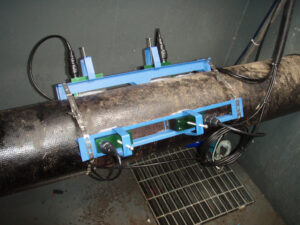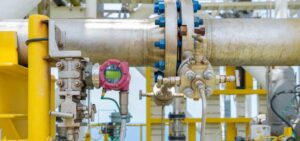What is a Flow Meter?
Flow meters are important devices used in various industries to measure the flow rate of either liquid or gas through a system. They provide valuable data that helps optimize different processes, including quality control and cost-effectiveness. There are different types of flow meters, including electromagnetic, turbine, and ultrasonic flow meters. Each type uses a specific measurement principle to determine the flow rate of the fluid. Flow meters are critical in industries such as petroleum, pharmaceutical, water, and wastewater treatment.
The accuracy of flow meters can vary from a few percent to less than 0.1%, and it is essential to select a device with an appropriate flow range and accuracy level for your application. Proper installation, calibration, and maintenance are crucial to maintaining the accuracy and reliability of flow meters. Additionally, some flowmeters can provide additional data, such as temperature, pressure, and viscosity, which can be useful in optimizing processes and ensuring product quality.
Flow Meters have different measurement principles
Flow meters come in different types, and each type utilizes a specific measurement principle. The most common types of flow meters include differential pressure flow meters, positive displacement flow meters, electromagnetic flow meters, turbine flow meters, and ultrasonic flow meters. Understanding the measurement principle used in a flow meter is essential in selecting the appropriate device for your application.
Flow Meters have different accuracy levels
The accuracy of flow meters is critical in ensuring that the data obtained is reliable and useful. Different flow meters have different accuracy levels, which can vary from a few percent to less than 0.1%. It is essential to consider the required level of accuracy for your application to select the most appropriate flow meter.
Installation and maintenance are crucial for accurate flow measurement
Proper installation and maintenance of flow meters are critical in ensuring that they provide accurate and reliable data. Incorrect installation, improper calibration, and lack of maintenance can result in inaccurate readings, leading to wrong conclusions and suboptimal process control. Regular calibration, cleaning, and inspection are essential to maintain the accuracy and reliability of flowmeters.
Flow Meters have different flow ranges
Flow meters have different flow ranges, which refer to the maximum and minimum flow rates that a particular device can measure accurately. It is crucial to select a flowmeter with an appropriate flow range for your application to ensure that it can measure the expected flow rates accurately.
Flow Meters can provide additional data
Apart from measuring flow rates, some flow meters can provide additional data, such as temperature, pressure, and viscosity. This additional data can be useful in optimizing processes and ensuring product quality.
Flow meters are critical devices in various industries that provide valuable data to optimize processes and ensure product quality. Understanding the different types, measurement principles, accuracy levels, installation and maintenance requirements, flow ranges, and additional data provided by flowmeters is essential in selecting the appropriate device for your application.





